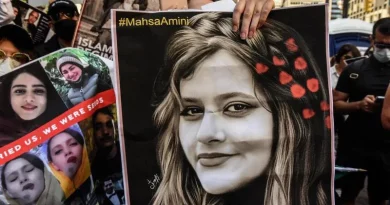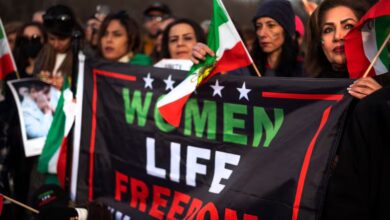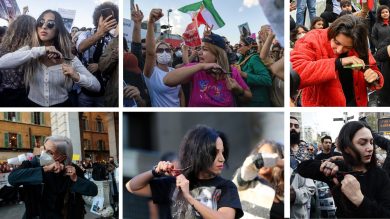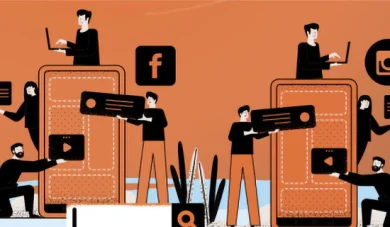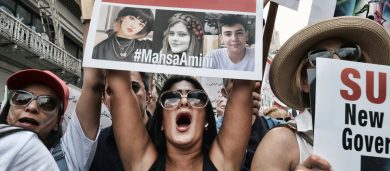The Islamic Revolutionary Guard Corps (IRGC) is Iran’s most powerful and feared institution—not just because of its military firepower, but because of its brutal mastery of repression. From mass surveillance to sniper fire, from torture chambers to internet blackouts, the IRGC operates with a singular mission when facing dissent: crush it completely.
Whether protests arise over economic hardship, political corruption, ethnic discrimination, or gender apartheid, the IRGC activates a deeply rehearsed and well-funded system designed to neutralize resistance and discourage any future uprisings.
This article outlines the IRGC’s repression playbook—10 key tactics used to suppress protest movements, silence civil society, and enforce fear across Iran. These tactics are not just tools of domestic control—they are warnings to the world about how state terror operates under the cover of “national security.”
1. Mass Surveillance and Preemptive Targeting
Before a protest even begins, the IRGC is watching.
Methods:
• Monitoring encrypted messaging apps and social platforms (Telegram, Instagram, Signal)
• Facial recognition via CCTV and drone footage
• Use of informants within universities, factories, and neighborhoods
• Tracking travel patterns and phone metadata
Targeting:
• Identifies “influencers,” organizers, and frequent protest attendees
• Assembles threat profiles used for early arrests or interrogation
• Monitors diaspora communications and VPN use
This surveillance allows the regime to act before mobilization becomes dangerous.
2. Preemptive Raids and Arbitrary Arrests
Once protest plans are detected, the IRGC moves quickly to break the leadership.
Common Practices:
• Nighttime home raids without warrants
• Confiscation of phones, laptops, and documents
• Threats against family members
• Arrests without charges or legal counsel
Often, those arrested are held in secret detention centers and tortured to extract intelligence about networks or plans.
This tactic aims to disorganize protest movements before they reach the streets.
3. Use of Lethal Force and “Shoot to Kill” Orders
The IRGC has repeatedly shown a willingness to use deadly force against unarmed protesters.
Examples:
• November 2019: Over 1,500 people killed in less than a week
• Zahedan 2022: More than 90 killed during protests over state violence
• Mahsa Amini Uprising 2022–2023: Children, women, and bystanders among the dead
Methods:
• Deployment of snipers on rooftops
• Live ammunition and metal pellets at point-blank range
• “Kill zones” where escape is blocked and fire is concentrated
These tactics create fear, chaos, and traumatic shock—essential tools for suppressing collective action.
4. Mobile Internet Blackouts and Communication Disruption
To isolate protesters and block documentation of violence, the IRGC shuts down communication.
Tactics Include:
• Nationwide internet shutdowns, like in November 2019
• Localized mobile data cutoffs in protest zones
• Throttling VPNs, encrypted apps, and cloud services
• Blocking SMS messaging and landlines
This digital blackout is often accompanied by physical crackdowns, knowing there will be no live footage or instant global outrage.
5. Torture, Forced Confessions, and “Reeducation”
Arrested protesters—especially women and youth—are subject to horrific abuse.
Documented Methods:
• Beatings, flogging, and electric shocks
• Sexual violence, including rape and genital torture
• Psychological torture: sleep deprivation, mock executions
• Threats against family members
Forced Confessions:
• Broadcast on state TV under duress
• Used to justify charges of “collusion,” “corruption on earth,” or “spying”
These practices are central to the IRGC’s strategy of humiliation, intimidation, and narrative control.
6. Targeting of Women and Gender-Based Violence
Women have led many of Iran’s protest movements—and the IRGC has responded with targeted brutality.
Examples:
• Mass arrests of unveiled women and teenage girls
• Chemical attacks on girls’ schools (2022–2023)
• Sexual assault during interrogation
• Use of “virginity tests” and threats of honor-based violence
By targeting women, the IRGC aims to reassert patriarchal control and discourage female leadership.
7. Public Executions and Death Sentences
Protesters are often charged with moharebeh (“waging war against God”) or “corruption on earth”—vague charges used to justify execution.
Notable Victims:
• Navid Afkari (2020): Wrestler executed after torture and a forced confession
• Mohsen Shekari (2022): Executed weeks after a protest arrest
• Majidreza Rahnavard (2022): Public hanging intended to intimidate others
Executions are rushed, opaque, and often based on fabricated evidence—designed to terrorize.
8. Psychological Warfare and Disinformation
The IRGC runs a vast propaganda machine to manipulate public perception and break protester morale.
Tactics:
• Spreading disinformation through IRGC-affiliated news outlets (Fars, Tasnim)
• Labeling protesters as “foreign agents,” “terrorists,” or “drug addicts”
• Staging pro-regime rallies and televising them heavily
• Online troll campaigns to harass and dox dissidents
They aim to create confusion, discourage unity, and erode international sympathy.
9. Punishing Families and Collective Retaliation
When they cannot catch the protesters, the IRGC targets their families.
Documented Actions:
• Arrest of relatives, even elderly parents or siblings
• Demolition of family homes
• Harassment and interrogation of minors
• Refusal to return the bodies of those killed in protests
By punishing the innocent, the regime tries to sever the roots of resistance.
10. Legal Terror: Sham Trials and Long Sentences
Iran’s judiciary, heavily influenced by IRGC Intelligence, is used as a legal weapon.
Common Patterns:
• Trials held in secret, often lasting just minutes
• No defense attorneys allowed
• Charges based on confessions under torture
• Sentences: 5–20 years for “assembly,” death for “enmity against God”
Political prisoners are denied parole, abused in custody, and often transferred between facilities to break their spirits.
Conclusion: Repression as Policy, Not Exception
What the IRGC does during protests is not rogue behavior. It is a rehearsed, state-sanctioned policy of brutality.
This playbook is deployed with:
• Strategic precision: combining psychological, physical, and digital repression
• Legal cover: to criminalize dissent
• Military funding: to suppress civilians with war tools
• Religious justification: to frame dissent as sacrilege
And yet, protests continue.
Because even the best playbooks cannot contain the will of a people who refuse to be broken.
Join Our Newsletter!
Stay informed with the latest updates, news, and ways to take action in the fight for justice and global security. Sign up now to get updates delivered straight to your inbox!

